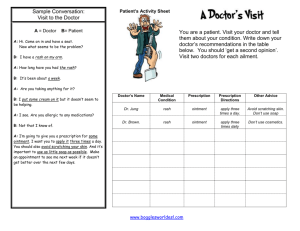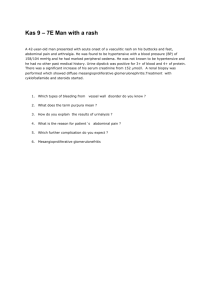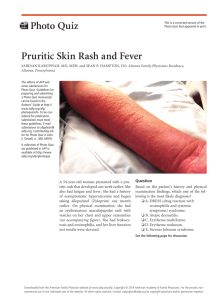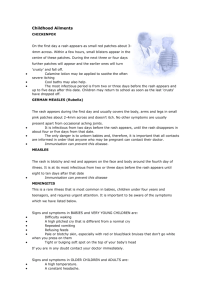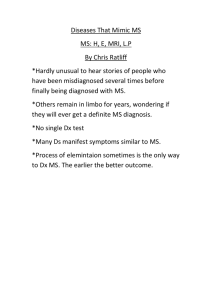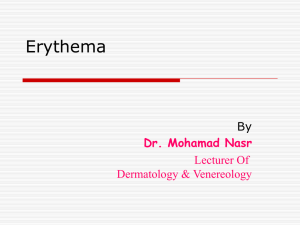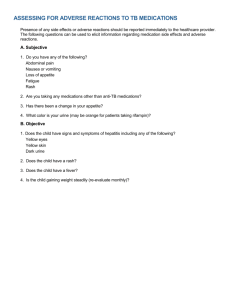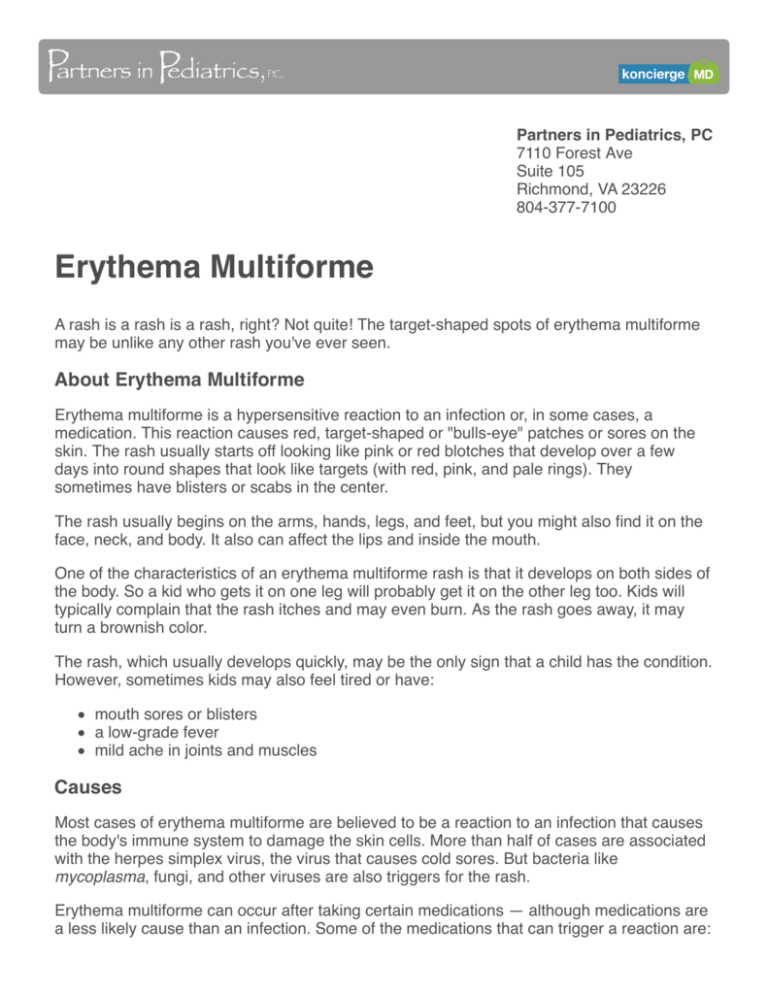
Partners in Pediatrics, PC
7110 Forest Ave
Suite 105
Richmond, VA 23226
804-377-7100
Erythema Multiforme
A rash is a rash is a rash, right? Not quite! The target-shaped spots of erythema multiforme
may be unlike any other rash you've ever seen.
About Erythema Multiforme
Erythema multiforme is a hypersensitive reaction to an infection or, in some cases, a
medication. This reaction causes red, target-shaped or "bulls-eye" patches or sores on the
skin. The rash usually starts off looking like pink or red blotches that develop over a few
days into round shapes that look like targets (with red, pink, and pale rings). They
sometimes have blisters or scabs in the center.
The rash usually begins on the arms, hands, legs, and feet, but you might also find it on the
face, neck, and body. It also can affect the lips and inside the mouth.
One of the characteristics of an erythema multiforme rash is that it develops on both sides of
the body. So a kid who gets it on one leg will probably get it on the other leg too. Kids will
typically complain that the rash itches and may even burn. As the rash goes away, it may
turn a brownish color.
The rash, which usually develops quickly, may be the only sign that a child has the condition.
However, sometimes kids may also feel tired or have:
mouth sores or blisters
a low-grade fever
mild ache in joints and muscles
Causes
Most cases of erythema multiforme are believed to be a reaction to an infection that causes
the body's immune system to damage the skin cells. More than half of cases are associated
with the herpes simplex virus, the virus that causes cold sores. But bacteria like
mycoplasma, fungi, and other viruses are also triggers for the rash.
Erythema multiforme can occur after taking certain medications — although medications are
a less likely cause than an infection. Some of the medications that can trigger a reaction are:
seizure drugs, like phenytoin
anesthesia drugs, like barbiturates
nonsteroidal anti-inflammatory drugs, including ibuprofen
antibacterial drugs, like sulfonamides
penicillin and other antibiotics
In addition, some cases occur after a child has received an immunization, such as the
tetanus-diphtheria-acellular pertussis (Tdap) or hepatitis B vaccines.
The condition is not contagious, so cannot be passed from one person to another.
Diagnosis
A doctor is usually able to recognize erythema multiforme just by looking at it. To help figure
out what caused it, the doctor will ask about any recent infections your child may have had
and any medications he or she is taking. Sometimes it's not obvious what's causing the rash,
but a doctor can still treat the problem.
Treatment
Erythema multiforme goes away on its own without treatment. In many cases, though, the
doctor will try to treat whatever caused your child to have the reaction. So if a bacterial
infection is thought to be behind the rash, the doctor may recommend that your child take an
antibiotic. If a medication is the likely culprit, the doctor probably will have your child stop
taking it and replace it with another medication, as needed.
To help make your child feel better, the doctor may recommend:
putting moist compresses on the rash
using acetaminophen, antihistamines, or topical creams to help relieve itchiness or
soreness
using a steroid medicine for a few days if there are severe mouth sores
Although these treatments provide relief, they do not shorten the duration of the rash.
Outlook
Most kids who get erythema multiforme have no long-term effects. The rash usually goes
away in 1 to 2 weeks, but can last as long as 4 weeks. It doesn't cause scarring, but in some
kids might leave darker spots on the skin for a few months.
An erythema multiforme rash may come back again (recur) after going away, especially if a
child is re-exposed to whatever caused the initial outbreak (so, for example, a child may
need to avoid certain medicines). If the herpes simplex virus is causing repeated episodes of
erythema multiforme, a doctor may prescribe a daily antiviral medicine to prevent
recurrences.
Reviewed by: Kate M. Cronan, MD
Date reviewed: May 2012
© 1995-2013 The Nemours Foundation/KidsHealth. All rights reserved.
Note: All information is for educational purposes only. For specific medical advice, diagnoses, and treatment,
consult your doctor.

